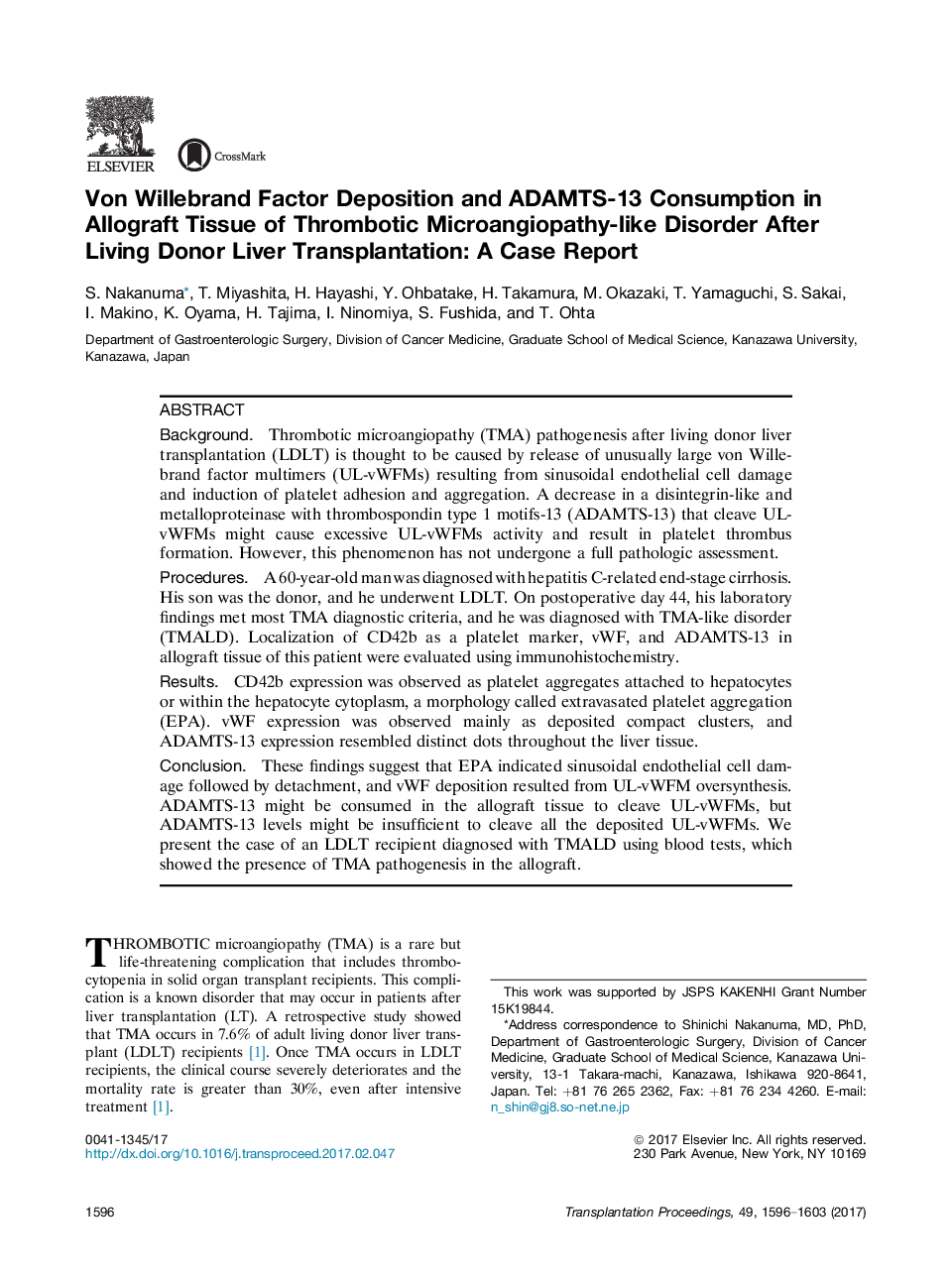| Article ID | Journal | Published Year | Pages | File Type |
|---|---|---|---|---|
| 5728743 | Transplantation Proceedings | 2017 | 8 Pages |
â¢We report TMA-like disorder as a rare complication after living donor liver transplantation.â¢TMA pathogenesis in the allograft has not been fully assessed because it is difficult to obtain allograft tissue in patients with thrombocytopenia.â¢We immunohistochemically evaluated the presence and localization of platelet aggregation, vWF, and ADAMTS-13 in this allograft tissue, and we assessed TMA pathogenesis in the allograft.â¢This is the first such report to our knowledge.
BackgroundThrombotic microangiopathy (TMA) pathogenesis after living donor liver transplantation (LDLT) is thought to be caused by release of unusually large von Willebrand factor multimers (UL-vWFMs) resulting from sinusoidal endothelial cell damage and induction of platelet adhesion and aggregation. A decrease in a disintegrin-like and metalloproteinase with thrombospondin type 1 motifs-13 (ADAMTS-13) that cleave UL-vWFMs might cause excessive UL-vWFMs activity and result in platelet thrombus formation. However, this phenomenon has not undergone a full pathologic assessment.ProceduresA 60-year-old man was diagnosed with hepatitis C-related end-stage cirrhosis. His son was the donor, and he underwent LDLT. On postoperative day 44, his laboratory findings met most TMA diagnostic criteria, and he was diagnosed with TMA-like disorder (TMALD). Localization of CD42b as a platelet marker, vWF, and ADAMTS-13 in allograft tissue of this patient were evaluated using immunohistochemistry.ResultsCD42b expression was observed as platelet aggregates attached to hepatocytes or within the hepatocyte cytoplasm, a morphology called extravasated platelet aggregation (EPA). vWF expression was observed mainly as deposited compact clusters, and ADAMTS-13 expression resembled distinct dots throughout the liver tissue.ConclusionThese findings suggest that EPA indicated sinusoidal endothelial cell damage followed by detachment, and vWF deposition resulted from UL-vWFM oversynthesis. ADAMTS-13 might be consumed in the allograft tissue to cleave UL-vWFMs, but ADAMTS-13 levels might be insufficient to cleave all the deposited UL-vWFMs. We present the case of an LDLT recipient diagnosed with TMALD using blood tests, which showed the presence of TMA pathogenesis in the allograft.
